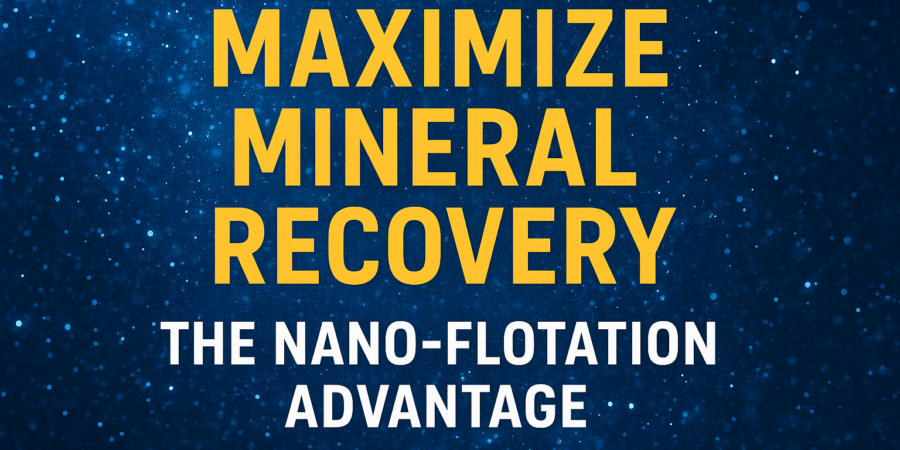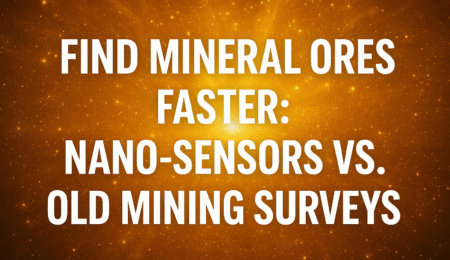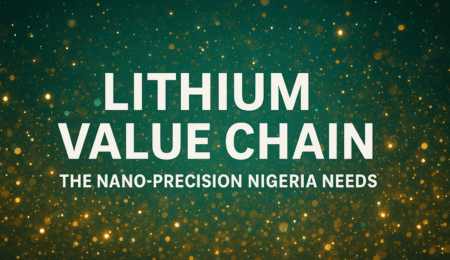The heart of a profitable mining operation lies not just in what you dig out of the ground, but in how much of the valuable mineral you actually recover during processing. For decades, the Achilles’ heel of mineral processing, particularly in Africa, has been the colossal failure to efficiently capture fine particles; the microscopic fractions of gold, lithium, or tin that are generated during crushing and grinding.
These ultra-fine particles, too small for traditional processes, are currently washed away and discarded into tailings dams. This is not unavoidable waste; it is direct profit loss. In an era where Nigeria aims to extract maximum value from lower-grade ores and complex mineral deposits, this inefficiency is a multi-billion-dollar revenue drain that is simply unsustainable.
The Financial Flaw in Conventional Flotation
The traditional flotation process relies on attaching air bubbles to mineral particles, making them buoyant so they float to the surface for collection. This is where the old technology breaks down:
- The Particle-Bubble Mismatch: Fine particles (often below 75 microns) are too small to successfully collide with and attach to the large air bubbles used in conventional flotation circuits. They simply lack the mass and momentum.
- The Reagent Overdose: To compensate for poor performance, operators often flood the circuit with excessive chemical reagents. This non-selective approach is costly, creates toxic environmental runoff, and often results in poor concentrate grade because non-target ‘gangue’ minerals are captured along with the target.
- The Low-Grade Trap: As high-grade deposits diminish, miners must process lower-grade ores. When your recovery efficiency is low, processing low-grade ore becomes an immediate, losing financial proposition.
The stakes are immense. Any improvement in recovery, even by a few percentage points, translates directly into exponential profit increases over the life of a mine.
The Hyper-Selective Solution: The Nano-Flotation Advantage
The Nano-Flotation Advantage is a revolutionary shift that solves the fine particle problem at its source by engineering the separation process at the nanoscale. It’s about leveraging the hyper-activity of matter on the atomic level.
This is not a minor adjustment; it is an industrial upgrade that uses two key nanotechnologies:
- Engineered Nano-Reagents: Instead of using conventional, bulky collectors, mining engineers are deploying nano-sized flotation reagents. These chemicals are custom-designed with a high surface-area-to-volume ratio, making them hyper-selective. They attach only to the target mineral surfaces (like a magnetic key to a lock) with far greater efficiency, dramatically increasing the recovery of those elusive fine particles.
- Nano- and Micro-Bubbles: Introducing tailored, ultra-fine bubbles into the circuit fundamentally changes the dynamics. Nanobubbles and Microbubbles are the perfect size to successfully collide with and attach to the ultra-fine mineral particles, lifting them out of the slurry that conventional bubbles miss. This is the atomic precision that boosts recovery rates into the optimal 90%+ range.
The result is a transformative shift: higher recovery, purer concentrate, and a massive reduction in wasted minerals; all while using fewer chemicals and lowering environmental impact. This is the definition of a hypersonic frontier technology that directly improves the bottom line.
The opportunity to integrate this disruptive, capital-efficient technology is exclusive to those with the right knowledge and a clear implementation strategy. To understand the policy requirements, market linkages, and step-by-step business models that support integrating this technology, a deeper exploration is essential. This knowledge is the competitive edge you need.
The Investor’s Dream: Sustainability Meets Profit
For investors, the deployment of nano-flotation is the ultimate de-risking strategy. It guarantees that the project is not only more profitable but also more sustainable. Less waste in tailings means lower environmental liability, lower water usage, and a project that aligns perfectly with global ESG (Environmental, Social, and Governance) standards.
Nigeria’s future in the global mining market depends on its ability to demonstrate technological superiority and responsibility. Nano-Flotation is the centerpiece of that commitment. It turns previously lost minerals into high-grade revenue, making even complex and low-grade deposits highly viable. The race to adopt this gold-standard technology is on, and the market advantage will belong to the early movers who implement the system correctly.
The choice is clear: Innovate or be left behind. This article only scratches the surface of the economic, policy, and entrepreneurial opportunities this disruption presents. Download the comprehensive guide and full business blueprint today: Nanotechnology: Business Opportunities in the Nigerian Mining Industry – Unveiling Hypersonic Frontiers for Innovation and Wealth Creation.
READ ALSO:





Leave a Reply